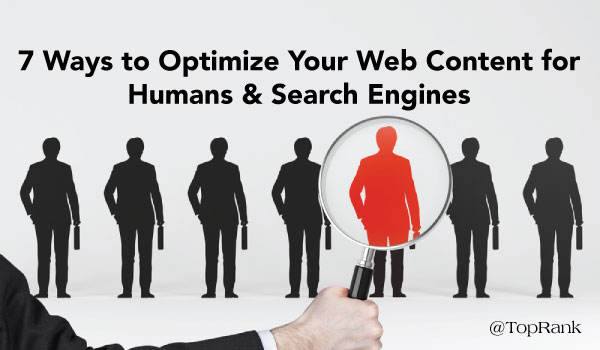
In case you haven’t heard, Search Engine Optimization (SEO) is not dead. In fact, SEO is an absolute must for successful content marketing, but gone are the days where the first two words dictate how you execute the third.
Ever since Google dropped its Penguin update in 2012, user experience has become the primary focus of good SEO. Yes. Today’s SEO is about finding the perfect balance between user-centric content and convincing search engine crawlers that your content is supreme.
Now, I’m pretty confident that everything I just said isn’t news to you. However, actually accomplishing that perfect balance may be something you’re still working on. And that’s where I aim to help.
Below are some best practices and tips for optimizing your on-page content for human users and search engines:
#1 – Put Yourself in the Mind of the User
Researching and understanding your audience’s needs and intentions will help guide your keyword strategy and content creation so you can provide the best information for your prospective customers—and search engines.
If you were searching for your product or services, what information would you be looking for? What would you search queries contain? What are your pain points? How can this product or service help address those pain points?
#2 – Let Go of Keyword Stuffing
While keyword stuffing used to be a common and acceptable practice, that’s no longer the case. Keyword stuffing adds nothing to user experience, and as robots become more advanced, your risk of being penalized for following such practices increases.
#3 – Cover the SEO Basics
All of the items below are essential parts of on-page SEO basics. The content for each should be unique and incorporate the keywords appropriately.
- SEO Title: Your page title should be no longer than 70 characters and should have your target keyword as close to the beginning as possible.
- Meta Description: Meta descriptions should be no longer than 160 characters, and your keyword should be included there, too. The text should be a nice teaser that informs users and entices them to click through to the page. (Tip: Start with a strong action verb such as “Learn” or “Read.”)
- H1: The H1 (headline) tag tells search engines this is the most important headline on the page, and it’s also a visual cue to readers. Just one H1 should be used on each page.
- Image alt tag: Describing the image is incredibly important. Search engines can’t see the image like humans. It’s certainly ideal to get your keyword in here, but don’t force it.
- URLs: Shorter is better here, and make sure to include your focus keyword, too. URLs are visible in search results and could impact whether users click through.
- Body copy: Include the target keyword at the top of the page and at least two or three times throughout the rest of the copy—including variations of the keyword.
#4 – Be Honest & Accurate
If you drive users to your content with one promise, and then don’t deliver when they reach the content, you’re creating a very bad user experience. Any text—keywords or otherwise—included in the title, meta, H1, image alt tag or URL should accurately describe what a user will find when they land on your page.
#5 – Crosslink. Crosslink. Crosslink.
Crosslinking your content to other pages on your site is an absolute must. Not only does it add relevance to pages, it also keeps people moving through your website and can send traffic to your priority pages. (Tip: Make sure your crosslinking strategy matches where you are in the sales cycle. This will ensure you’re moving people along the sales funnel in the right way.)
#6 – Make Content Easy to Read & Scannable
There is no denying that we are in an age of information overload. To combat content fatigue for your users, it’s essential to give them content that is easy to digest. A few ways to create ease of use for your audience include:
- Avoid large blocks of content.
- Utilize bullets and numbering for lists.
- Use H2 or H3 tags as subheads to further break up content.
- Bold or italicize words or phrases to make key points stand out.
#7 – Let Content Flow Naturally
If you’re sticking with all the other guidelines above, this shouldn’t be a problem. Keywords and keyword variations will naturally occur throughout the body text, the content will be visually appealing and easy to read, links will help guide users to other areas of your site and search bots will be able to easily crawl the page.
What it all comes down to—as TopRank Marketing CEO Lee Odden would say—is ”Being the best answer.” Your content should provide the best possible information to your audience. And having that content optimized to today’s SEO standards will allow search engines to deliver those pages to your audience.
What are your biggest challenges for creating content that’s full of SEO, but also great for users? Share your thoughts in the comments section below.
Did you like this article? Then you may also enjoy “5 SEO Considerations to Win with Both Customers and Search Engines.”
Header image via Shutterstock


